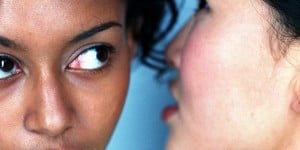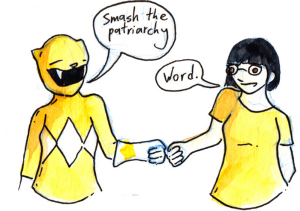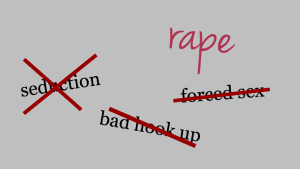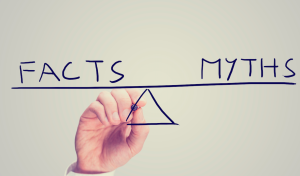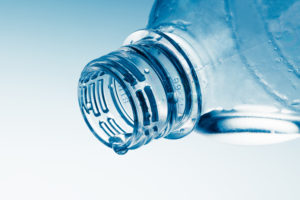
Water drop pouring out of a plastic bottle on a blue background.
“Water is life,” the Standing Rock Water protectors chant.
It is all too easy to hear the deceptively simple chant of the Water Protectors as hyperbole but it is true: Water literally is life.
The human body is about 70% percent water, and water promotes every single function in our body.
As little as 1% dehydration can negatively impact mood, concentration, memory, and coordination. And chronic dehydration can cause joint pain, headaches, confusion, and moodiness. People with chronic illnesses may feel dehydration more acutely.
Water is life. And clean drinking water should be accessible to all creatures.
The Standing Rock Sioux has been fighting to keep their – and everyone else downstream’s – drinking water safe from oil spills. The population of Flint, Michigan, still, after over two years, can’t just turn on their taps to clean drinking water. The people of Toledo, Ohio couldn’t drink tap water because of a toxic algae bloom caused by toxic farm run-off in the summer of 2014.
There are whole communities around the world who don’t have access to clean drinking water, often polluted by corporate interests. Clean drinking water is increasingly difficult for the majority of people in the world to access.
In the US alone, the National Resource Defense Fund found that over 18 million people, mostly in poor communities and communities of color, were served lead in their water in 2015.
The easy, logical response to situations like these – and the one given by the government when announcing that the community’s tap water isn’t safe – is to rely on plastic bottles full of clean drinking water.
Indeed, the people of Flint received the warning in 2015 only to drink bottled water, and the populations of major cities such as Nairobi, Kenya and Mexico City, Mexico drink water out of plastic water bottles because the tap water will make you sick.
But now Flint is struggling to deal with the mountain of plastic because disposable, single-use plastic water bottles come with their own environmental baggage.
It can be so convenient to pick up a single-serve, single-use plastic water bottle while filling your car up with gas, while running between appointments or after work: Drink it, hydrate, and toss it into the recycling.
But these single-use bottles, even though you hardly remember them after you’ve used them, have a negative impact on your community, the environment you live in, and your body.
Here are several things to know and strategies to break the convenience habit.
1. Plastic Bottles Remove Us from the Idea that Clean Drinking Water Is a Natural Right
Commercials for water, as well as wellness articles on staying hydrated, all show dewey-skinned people throwing their heads back and guzzling water out of plastic water bottles – as if water comes from plastic.
The fact is that we all live within a watershed, or in the flow of water down from mountains and ridges into creeks, rivers, and out to a lake or ocean.
Originally, people got water from their watershed. Now, hardly any of us could name which watershed we’re in and expect to be able to drink straight from the tap.
The prolific use of single-use plastic water bottles and the marketing around them have further divorced us from the idea that clean drinking water is something that should be easily accessible and ubiquitous.
Instead, their marketing campaigns have convinced even people living where they can get clean water that they need filtered water.
The more accustomed people get to buying and using single-use plastic water bottles, the more distanced we feel from rivers and oceans – and when corporations pollute waterways, it seems like some distant thing that doesn’t affect us.
Convincing us of this belief is a part of the marketing plan of companies looking to sell water. Nestlé CEO Peter Braback famously said that access to clean drinking water is “not a public right” and should be privatized. Though he’s since backtracked on his statement, he’s clearly and directly invested in making clean water less accessible.
2. You Don’t Know Where Bottled Water Is From – Or What’s In It
FDA regulations don’t require companies who sell bottled water to disclose where the water comes from, how it’s treated, or what contaminates it might have.
When companies use “spring water,” then 30% of that water needs to come from a spring source, but “glacier water” and “mountain water” mean nothing.
About half of bottled water is ordinary tap water taken from municipalities – which yes, means that there’s a strain on the community’s water source.
Several years ago, the National Resources Defense Council did a study on where bottled water was coming from and found that one company pulled water from a source that was next to a hazardous waste dump.
Taking water from communities sometimes has devastating effects on the community as well. Take this instance, reported by World Crunch:
“In the small Pakistani community of Bhati Dilwan, a former village councilor says children are being sickened by filthy water. Who’s to blame? He says it’s bottled water maker Nestlé, which dug a deep well that is depriving locals of potable water. ‘The water is not only very dirty, but the water level sank from 100 to 300 to 400 feet,’ Dilwan says.”
Nestlé also continues to take over 80 million gallons of water from the California water system, pays next to nothing for it, and then profits immensely from selling it back.
Walmart, Arrowhead, Crystal Geyser, Aquafina, and Dasani also take water from California municipalities, bottle it, and sell it. They’re literally selling tap water and taking that much out of the system further strains a state already in drought.
On top of this, there aren’t as strict regulatory guidelines on what water in water bottles can contain.
Water going into bottles gets tested for microbes four times less than tap water and has no requirement to be tested for cryptosporidium, a chlorine-resistant microbe.
You can’t know what you’re drinking when you drink bottled water – and you can’t know who you are harming.
3. Plastic Contributes to Pollution – Even When You Dispose of It Properly
Plastic water bottles take about 1000 years to degrade, so even if you throw them away, they will be sitting around in landfills for centuries.
And if you toss them in the recycling bin, thinking that you’re getting out of contributing to the landfills, know that only one in five bottles, the ones made out of PET plastic (or Polyethylene Terephthalate, which you can tell because of the “1” surrounded by a triangle of arrows), are actually recyclable.
The rest go into landfill or are incinerated, releasing toxic fumes into the air.
Bottles that aren’t thrown in the recycling or garbage end up as litter and some make it into waterways and the ocean, and they begin to biodegrade there. While a combination of light and water help to break them down, what remains are small pieces of plastic with a high concentration of the harmful chemicals.
Animals ingest these small pieces, which harm them. When fish eat them and we eat those fish, then we also ingest those harmful manufacturing chemicals.
Plastic bottles begin harming the environment long before you buy them. The manufacturing process pollutes the air and people living near petrochemical plants report having health and respiratory issues.
4. Plastic Bottles Shed Chemicals
The chemicals that are used to make plastic more flexible and harder to break leach into the water the bottle contains, particularly if it heats up or has exposure to the sun. But phthalates are endocrine disruptors, blocking androgens such as testosterone from expressing itself, and has been strongly linked to breast cancer.
There are 25 different types of phthalates, so banning them can be a bit like a game of whack-a-mole. BPA, which was banned in baby bottles, sippy cups, and pacifiers in 2010, are still in plastic water bottles – and is also linked to breast cancer.
5. It’s Expensive
When you buy water in plastic bottles, you paying more for it than you pay for gasoline.
For example, a 16 ounce, single serving water bottle sells for about a dollar. A gallon contains 128 fluid ounces or eight single serving water bottles, yet gasoline sells for three dollars a gallon in San Francisco, or an average of $2.50 in the country.
You’re supporting corporations who never have humanity at heart. Their sole focus is to make money which means finding resources that are free or close to it to exploit.
It takes over 17 million barrels of oil to meet the demands of the US bottle manufacturing – as much oil to fuel 1.3 million cars for a year. Buying bottled water puts money back in the pockets of oil producers – whose pipelines, fracking, and oil wells constantly pollute massive bodies of water, requiring locals to turn back to plastic water bottles.
***
So what next? Here are some alternative strategies to break the habit while still staying hydrated.
1. Have a Glass of Water with Every Meal
No, you don’t need to carry a water bottle with you everywhere you go. If you live someplace where you can simply turn on the tap and drink the water coming out, have a glass of water with every meal.
This, of course, assumes that you live and work where you can safely drink tap water. Too many people, because of polluted water sources or terrible plumbing in their apartment building, don’t.
Because food does hydrate you, you don’t need to get the full eight suggested glasses of water in every day. But tying water-drinking habits to your eating schedule will help to keep you hydrated, and lessens the likelihood that you’ll be out and need to duck into a store to pick up some water.
2. Eat Foods with High Water Content
To stay hydrated, you don’t need to rely on straight water. Fruits and vegetables nourish and hydrate. Soup, ramen, pho, and miso hydrate, and it doesn’t need to be fancy – even a can of soup will provide much needed water and sodium.
Eating fresh fruits and vegetables isn’t available for people who live in a food desert and have to rely on what they can get at the liquor store, but canned soups, pastas, and quick cooking rice are usually available and are good options, especially if adding tap water is an option when cooking.
Some liquor stores carry iceberg lettuce, which, though it’s been derided for its comparative lack of nutrients, has a very high water content.
For people for whom fresh produce is available, cucumbers, carrots, jicama, melons, apples, and grapes all have a very high water content.
3. Order Water When You Go to Cafés or Bars
If you have the disposable income and live in an area where you tend to frequent cafes and bars, ask for a glass alongside your coffee or drink.
This way, you stay hydrated throughout your day, but without single-use plastic water bottles.
4. Invest in a Reusable Glass or Metal Water Bottle
They cost between $12-30. But if you use them instead of the plastic ones, you’ll save money in a month. This also assumes that you can fill your bottle up from the tap.
5. Limit Your Intake of Things That Dehydrate You
Different foods and drink affect people differently, but lessening your intake of caffeine and alcohol – maybe one cup less a day or one drink less on a night out – can go a long way towards overall hydration levels.
High-protein diets and diets high in processed food require more water to be flushed through the system as well. Adding in fresh vegetables helps in these cases, if they’re available to you.
6. Make Use of Public Water Fountains
One of the things that has disappeared from the public cityscape nearly as quickly as phone booths are public water fountains. Though they are less and less, they are still around.
Municipal buildings often have them: check the library, the public recreation area, city hall, and courthouse for them. If you have a regular schedule of passing through certain parts of your town or city, you can most likely find one on your route.
***
The people who profit off single-use, plastic water bottles profit off of them at cost to the average person and the environment. They seem so convenient, but with a little bit of effort, you can step out of the cycle of plastic water bottles and still take care of your own needs to stay hydrated.
[do_widget id=’text-101′]
Michelle writes fiction, memoir and non-fiction and spends as much time as possible in the mountains. She has an MFA in creative writing and is a VONA and Community of Writers at Squaw Valley alum. Michelle lives in Mexico City.
Search our 3000+ articles!
Read our articles about:
Our online racial justice training
Used by hundreds of universities, non-profits, and businesses.
Click to learn more





